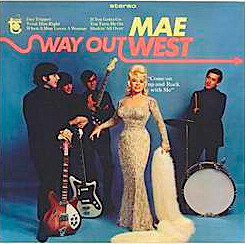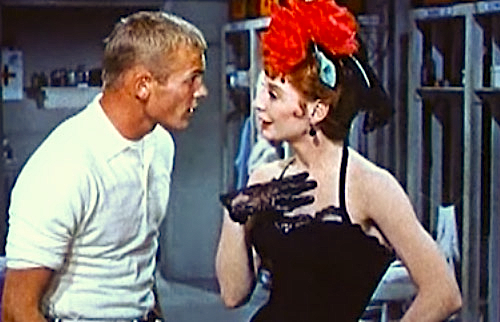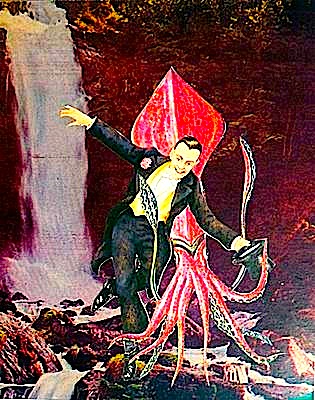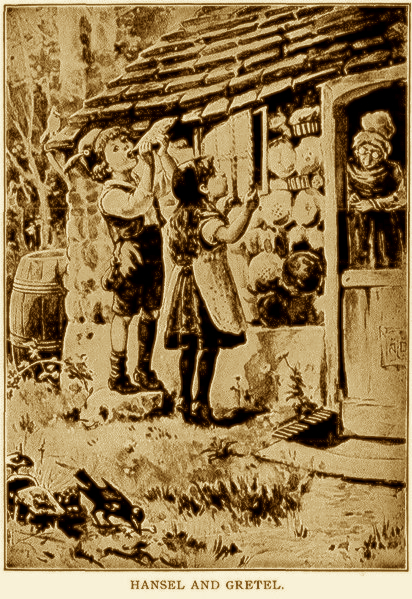
For the last couple of posts, I’ve been talking about the dreaded elevator speech, a.k.a. the heart of the kind of informal pitch a writer might give for her book outside of a formal meeting at a conference. She might have an opportunity to say it at a luncheon, for instance, when an off-duty agent or editor sitting across the table asks, “So what do you write?” Or just after the agent of her dreams gives a talk, after waiting patiently until the crowds of other informal pitchers die down around her. Or, as I have had to do, at 4 am while fending off the not-at-all professional advances of a senior editor at a major NYC publishing house.
Hey, when one’s agent is at one’s elbow, hissing, “Give him your pitch,” one obeys. Then one gets the heck out of there.
Since informal pitches are generally given on the fly and under less-than-ideal circumstances, they take some guts to give. Let’s face it, not every writer has the pure, unadulterated moxie to stop a well-known agent in a conference hallway and say, “Excuse me, but I’ve been trying for two days to get an appointment with you. I’m sorry to bug you, but could you possibly spare thirty seconds to hear my pitch?” And, frankly, not every conference organizer is going to be thoroughly pleased with the writers who do it.
Allow me to let you in on a little professional secret, though: if you did an anonymous poll of agented writers who found representation by pitching at conferences, most of them would tell you that they’ve engaged in hallway pitching. Statistically, it makes perfect sense: the more agents to whom one pitches, the greater one’s probability of being picked up — in the signed-by-an-agent sense, mind you; stop thinking about that editor at that nameless publishing house — and at most conferences that offer pitch meetings, writers are given only one or two appointments. Simple math.
Next time, I shall be talking about how to make the actual approach for a hallway pitch, because it requires a certain amount of finesse not to end up as the subject of an anecdote about how pushy aspiring writers can be. Today, however, I want to bring up another common trait of the successful hallway pitcher: originality.
As I pointed out a couple of days ago, the first commandment of a winning elevator speech is THOU SHALL NOT BORE. Actually, it’s a pretty good rule of thumb for any pitch, query letter, or submission, but if a hallway pitch is snore-inducing, the results are instantly fatal.
Not boring is a while lot harder than it sounds, you know. I hate to be the one to break it to you, but most 3-line pitches sound a great deal alike, at least to someone who has been hearing them for three days straight. The structure is, as you may have noticed, awfully darned restrictive. No wonder the people who hear them for a living tend to remember my students: the mere fact of their introducing themselves is out of the ordinary.
Add to that all of the pitches for books that sound suspiciously like the big bestseller from two years ago, as well as the ones that lift plots, character traits, and situations from movies, TV shows, pop culture, and good, old-fashioned clichés, and is it still surprising that pitches start to blur together in the hearer’s mind after a startlingly short while?
Hands up, anyone who still doesn’t understand why that agent who requested the first fifty pages of a manuscript last Saturday might not recall the details of the pitch today.
Is that abject terror I’m sensing creeping around out there, or have the trees outside my window suddenly taken up moaning for fun and profit? “Gee, Anne,” the newly nervous pipe up, “I had no idea that part of the goal of my pitch — 3-line or otherwise — was to strike the agent or editor as original. Now I’m quaking in my boots, petrified that the agent of my dreams will burst into laughter and cry, ‘Is that the best you can do? I’ve heard that story 15 times in the last week!’”
Take a nice, deep breath. Remember, no agent or editor can possibly judge the quality of your writing solely through a verbal pitch, so even in the unlikely event that a pro said something like that to your face, it would be a response to your book’s premise or plot as you have just presented it, not to the book itself. As practically everybody in the industry is fond of saying, it all depends on the writing.
And I have even more good news: if you can make your elevator speech resemble your narrative voice, it is far, far more likely to strike the hearer as original.
Yes, you read that correctly: I’m advising you to work with your elevator speech or pitch until it sounds like YOUR writing, rather than like a pale (or even very good) replica of an author whom you happen to admire. Or like a pitch for a book that’s already on the bestseller list.
Was that giant thud I just heard the sound of the jaws of all of you who have attended conferences before hitting the floor? “But Anne,” these astonished souls protest, cradling their sore mandibles, “you’re got that backwards, don’t you? I can’t even count the number of times I’ve heard agents and editors say at conferences, ‘Oh, THAT kind of book isn’t selling anymore.’ Wouldn’t it be better strategy for me to imply that my book is just like something that is selling well right now?”
Well, yes, if your manuscript actually is similar to a current bestseller. Even if you find yourself in this position, though, you’re going to want to figure out what makes your book original — any agent who represents those types of books will have been inundated with carbon copies of that bestseller since about a month after it hit the big time.
Seriously, do you have the slightest idea how many YA vampire books Millicent the agency screener currently sees in any given week?
In the maelstrom of advice aimed at writers trying to land an agent, the issue of voice often falls by the wayside, as if it were not important. Or writers might even — sacre bleu! — derive the erroneous impression that their work is SUPPOSED to sound as if it had been written by someone else — to be precise, by an author on the current bestseller list.
Can’t imagine where so many aspiring writers get this idea. Unless it’s from all of those conferences where agents, editors, and marketing gurus speak from behind the safety of podiums (podia?) about how helpful it is to mention in a pitch or a letter what bestseller one’s opus most resembles.
Listen: fads fade fast. (And Sally sells seashells by the seashore, if you’d like another tongue-twister.) Even after a writer signs with an agent, it takes time to market a book to editors — and after the ink is dry on the publication contract, it’s usually AT LEAST a year before a book turns up on the shelves of your local bookstore. A bestseller’s being hot now doesn’t necessarily guarantee that the same kind of voice will be sought-after several years hence.
If you doubt this, tell me: have you met many agents lately who are clamoring for the next BRIDGET JONES’ DIARY? Or even the next DA VINCI CODE?
In the long run, I believe that a writer will be better off developing her own voice than trying to ape current publishing fashions. As long, that is, as that voice is a good fit for the project at hand.
That’s as true of a pitch as it is for a novel or memoir, you know. A generic pitch isn’t going to show off an honestly original voice, or even a fresh story — it’s just going to sound like two-thirds of the other pitches an agent or editor has heard that day.
See why I so discourage writers I like from embracing the ubiquitous 3-line pitch formula? The way that new pitchers are typically encouraged to do it tends to flatten original stories. Squashes some of ‘em flat as pancakes, it does.
“Wait just a minute,” the chorus of conference-goers pipes up again. “I’m confused. We’ve been talking for a couple of weeks here about making my book project sound marketable. So if I make it sound like something that’s already a bestseller, why won’t that give my pitch the shine of marketability?”
An excellent question, with two even more excellent answers. First, a pitch (or query, or manuscript) that sounds too similar to a well-known publication is going to come across as derivative. Which, in case any of you had been wondering, is why those periodic experiments where some wag tries to query and submit the first five pages of some classic like PRIDE AND PREJUDICE in order to demonstrate that good writing no longer stands a chance are not actually measuring agents’ responses to high-quality writing. At this point in literary history, the first five pages of any Jane Austen novel would strike any literate Millicent as being derivative of Jane Austen.
Not that quite a few authors haven’t made a killing in recent years being derivative of Jane Austen, mind you. So much so that even copying her style has been done.
The second answer is that what is already in print isn’t necessarily indicative of what agents and editors are looking for NOW. (If you’re not sure why, I refer you back to that section above where I talked about the usual lapse between acquisition and publication.) The third answer — I’ll throw this one in for free — is that not all published writing exhibits an original narrative voice, so copying it is going to seem even less fresh.
That “Wha—?” you just heard was from Author! Author!’s own Pollyanna chorus. “But Anne,” these intrepid souls cry as soon as they have regained their gasped-out breath, “I don’t understand. I’ve been going to conferences and writing seminars for years, and unless I wasn’t paying attention, published writing and good writing were used as essentially synonymous terms. At minimum, I’ve always assumed that writing needs to be good to get published. But how is that possible, if not all published work has a unique voice?”
Whoa there, gaspers, take a nice, deep breath. In the first place, I’m going to go out on a limb here and state categorically that not all published writing IS good.
(A long pause while everyone waits to see if a vengeful deity is going to strike me down for sacrilege.)
I still seem to be standing, so allow me to continue: books get published for all kinds of reasons. The platform of the writer, for instance, or the fact that he’s a movie star. (I’m looking at you, Ethan Hawke, not Rupert Everett — although, on the whole, I would prefer to gaze upon the latter, for aesthetic reasons.) An eagerness to replicate the success of a freak bestseller. (Ask anyone who tried to sell historical fiction in the five years before COLD MOUNTAIN hit the big time.) Having been a prominent publisher’s college roommate. (One hears rumors.)
But in the vast majority of instances, a published book without a strong, distinctive narrative voice will be clear. Perhaps not full of insights or phraseology that makes you squeal and run for your quote book, but at least unobtrusively straightforward, informative, and decently researched.
You know, like newspaper writing. Clear, non-threatening, generic, ostentatiously objective.
To have a voice is to take a SIDE. At least one’s own. For some stories, that’s not the best option. In fact, your more discerning professional readers have been known to wrinkle their august brows over a manuscript and ask, “Is the voice the author chose for this appropriate and complimentary to the story?”
Not all voices fit with all material, after all — and if you doubt that, would YOU want to read a novel about a grisly series of child murders written in the light-hearted voice of a Christmas card? Or a bodice-ripper romance told in the vocabulary of a not-very-imaginative nun?
I’m guessing not.
At the moment, I work in three distinct voices: in descending order of perkiness, my blog voice, my fiction voice, and my memoir voice. (My memoir is funny, too, but as a great memoirist once told me, part of the art of the memoir is feeling sorry enough for yourself NOT to make light of your personal tragedies, for there lies your subject matter.)
Why not write everything in my favorite voice? Because it would not be the best fit for everything I choose to write. Nor would it best serve my literary purposes to pitch my fiction in the same voice as my memoir.
For instance, if I used my memoir voice here, to discussing the sometimes-grim realities of how the publishing industry treats writers, I would depress us all into a stupor. Because Author! Author!’s goal is to motivate you all to present your work’s best face to the world, I use a cheerleading voice.
Minion, hand me my megaphone, please.
One of the great things about gaining a broad array of writing experience is developing the ability to switch voices at will; you have to come to know your own writing pretty darned well for that. I’ve written back label copy for wine bottles (when I was too young to purchase alcohol legally, as it happens), for heaven’s sake, as well as everything from political platforms to fashion articles. Obviously, my tone, vocabulary choice, and cadence needed to be different for all of these venues.
Granted, not all of those writing gigs were particularly interesting, and I would not be especially pleased if I were known throughout recorded history as primarily as the person who penned the platitude tens of thousands of people read only when their dinner date left the table for a moment and the only reading matter was on the wine bottle. Yet all of my current voices owe a great deal to this experience, just as playing a lot of different roles in high school or college drama classes might give a person poise in dealing with a variety of situations in real life.
I digress, however. My point is that just as there are millions of different ways to tell any given story, there are millions of different ways to pitch it. Tone, voice, vocabulary choice, rhythm — a skillful writer may play with all of these tools in order to alter how a reader or pitch hearer receives the story.
Speaking of stories, let me tell you one that you may find enlightening.
Right after I graduated from college, I landed a job writing and researching for the LET’S GO series of travel guides. The series’ method of garnering material, at least at the time, was to pay a very young, very naïve Harvard student a very small amount of money to backpack around a given area. The job was jam-packed with irony: I was supposed to do restaurant and motel reviews, for instance, but my per diem was so small that I slept in a tent six nights per week and lived on ramen cooked over a campfire.
You might want to remember that the next time you rely upon a restaurant review published in a travel guide. (See earlier comment about not all published writing’s necessarily being good.)
Let’s Go’s tone is very gung-ho, a sort of paean to can-do kids having the time of their lives. But when one is visiting the tenth municipal museum of the week — you know, the kind containing a clay diorama of a pioneer settlement, a tiny, antique wedding dress displayed on a dressmaker’s form, and four dusty arrowheads — it is hard to maintain one’s élan. Yet I was expected to produce roughly 60 pages of copy per week, much of it written on a picnic table by candlelight.
Clearly an assignment that called for simple, impersonal clarity, right? Not so.
I can tell you the precise moment when I found my travel guide voice: the evening of July 3, a few weeks into my assignment. My paycheck was two weeks overdue, so I had precisely $23.15 in my pocket.
It was raining so hard that I could barely find the motel I was supposed to be reviewing. When I stepped into the lobby, a glowering functionary with several missing teeth informed that the management did not allow outsiders to work there.
”Excuse me?” I said, thinking that she had somehow intuited that I was here to critique his obviously lacking customer service skills. “I just want a room for the night.”
“The night?” she echoed blankly. “The entire night?”
Apparently, no one in recent memory had wanted to rent a room there for more than an hour at a stretch. The desk clerk did not even know what to charge.
(If you’re too young to understand why this might have been the case, please do not read the rest of this anecdote. Go do your homework.)
I suggested $15, a figure the clerk seemed only too glad to accept. After I checked into my phoneless room with the shackles conveniently already built into the headboard and screams of what I sincerely hoped was rapture coming through the walls, I ran to the pay phone at the 7-11 next door and called my editor in Boston.
“Jay, I have $8.15 to my name.” The combination of the rain noisily battering the phone booth and the angry mob urging me not to impinge upon their territory rendered his response inaudible. “The banks are closed tomorrow, and according to the itinerary you gave me, you want me to spend the night a house of ill repute. What precisely would you suggest I do next?”
He had to shout his response three times before I could understand what he was saying. ”Improvise?” he suggested.
I elected to retrieve my $15 and find a free campground that night, so Independence Day found me huddled in a rapidly leaking tent, scribbling away furiously in a new-found tone. I had discovered my travel writing voice: a sodden, exhausted traveler so astonished by the stupidity around her that she found it amusing.
My readers — and my warm, dry editor back in Boston – ate it up.
I told you this story not merely because it is true (ah, the glamour of the writing life!), but to make a point about authorial voice. A professional reader would look at the story above and try to assess whether another type of voice might have conveyed the story better, as well as whether I maintained the voice consistently throughout.
How would a less personal voice have conveyed the same information? Would it have come across better in the third person, or if I pretended the incident had happened to a close friend of mine?
Appropriateness of viewpoint tends to weigh heavily in professional readers’ assessments, and deservedly so. Many, many submissions — and still more contest entries — either do not maintain the same voice throughout the piece or tell the story in an absolutely straightforward manner, with no personal narrative quirks at all.
In other words, presenting the story in the same flat, just-the-fact voice that dogs the average conference pitch. You’d be surprised at how many pitches for interesting, imaginative books come across with all of the stylistic verve of a police report.
Don’t believe me? Okay, let’s take a gander at my Let’s Go story, compressed into a standard 3-line pitch:
A 22-year-old woman, soaked to the skin, walks into a motel lobby and tells the clerk she wants a room for the night. When the clerk tells her they do not do that, she responds with incredulity, but the manager confirms the information. Noting the 7’ x 10’ wall of pornographic videotapes to her right and the women in spandex and gold lame huddled outside under the awning, flagging down passing cars, the young woman suspects that she might not be in the right place and telephones the editor who sent her there.
Not the pinnacle of colorful, is it? It’s the same story, essentially, but an agent or editor hearing this second account and think, “Gee, this story might have potential, but the viewpoint is not maximizing the humor of the story. I think I’ll pass.”
Millicent would probably just yawn and yell, “Next!”
I might not garner precisely the same reactions if I pitched this story in the style of a well-known writer, but the end result — “Next!” — would probably be the same.
Which brings us back to the desirability of copying what you admire, doesn’t it? If imitation is the sincerest form of flattery (which I sincerely doubt), then bestselling authors must spend a heck of a lot of time blushing over how often aspiring writers pitch and submit books that bear suspicious similarities to theirs.
To an experienced pitch-hearer, the resemblance doesn’t have to be too overt for the kinship to be obvious, if you catch my drift. You wouldn’t believe how many stories were told by the deceased in the years following the success of THE LOVELY BONES, for instance, or how many multiple-perspective narratives followed hot on the heels of THE POISONWOOD BIBLE.
All that being said, I’m not going to lie to you — there is no denying that being able to say that your work resembles a well-known author’s can be a useful hook for attracting some agents’ and editors’ attention, at least on the Hollywood hook level:
“My memoir is ANGELA’S ASHES, but without all of that pesky poverty!”
“My chick lit manuscript is BRIDGET JONES’ DIARY set in a rehab clinic!”
“The story is SCHINDLER’S LIST, only without the Nazis or all the death!”
However, as the late great Mae West liked to point out (and I like to remind my readers she liked to point out), while copycats may sell in the short term — as anyone who amused herself in the first half of this year by counting just how many YA vampire novels US publishers acquired in any given week — for the long haul, what is memorable is originality.
That’s as true for a pitch as for a manuscript, you know. Perhaps that is one of the best measures of how effective a pitch is: three days after an agent has heard it, will he remember it on the airplane back to New York? Even if the storyline escapes him, will he remember the interesting way in which the pitcher told it, the narrative voice, the details he’d ever heard before?
In 99% of 3-line pitches, the answer is no. Partially, that’s the fault of the flattening format. Partially, it isn’t.
So at the risk of boring you, allow me to repeat the advice I’ve been hawking for the last couple of posts: the best use of your pre-pitching time — or pre-querying time — is to figure out precisely how your book is different from what’s currently on the market, not trying to make it sound like the current bestseller. A fresh story told in an original manner is hard for even the most jaded pro to resist.
Provided, of course, it’s presented in a professional manner. Next time, I’ll give you some tips on how to give a hallway pitch without impinging upon the hearer’s boundaries. In the meantime, keep up the good work!








